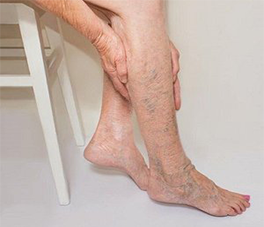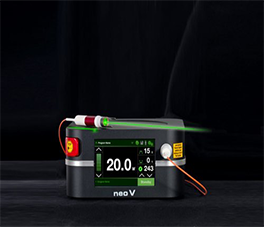AV Fistula - Complications


An AV fistula is a connection, made by a vascular surgeon, of an artery to a vein. Arteries carry blood from the heart to the body, while veins carry blood from the body back to the heart. Vascular surgeons specialize in blood vessel surgery. The surgeon usually places an AV fistula in the forearm or upper arm.
An AV fistula causes extra pressure and extra blood to flow into the vein, making it grow large and strong. The larger vein provides easy, reliable access to blood vessels. Without this kind of access, regular hemodialysis sessions would not be possible.
Untreated veins cannot withstand repeated needle insertions, because they would collapse the way a straw collapses under strong suction.
One of the mmediate complixcations is bleeding and swelling at the operation site due to a leak at the point where your surgeon has joined the vein to the artery.
This requires an immediate evaluation by the treating doctor and may require a repair in case the bleeding is severe. However this is a very rare occurence and usually bleeding is from the cut made in the skin and it stops by itself within an hour
Repeated punctures in the same area and lac of proper care of the puncture site can lead to a progressive weakness in the are and lead to degeneration and thinning of the vessel wall with ballooning out of the vein.
This is called an aneurysm and the risk is that it will burst with catastrophic bleeding.
Any signs of a progressively increasing swelling that is pulsatile in nature should warn you about a developing aneurysm and you should seek the help of a qualified vascular surgeon immediately.

The instances of infections in an AV Fistula is much lesser as compared to PermaCath or AV Grafts. However poor technique of cannulation and failing to follow aseptic precautions while cannulating can lead to potentially serious infections.
There are various techniques of cannulation(inserting a dialysis needle into your fistula). The "Button-Hole" technique is assosiated with higher incidences of infection as compared to the "Rope Ladder" technique.
It is important that you discuss these issues with your Treating Nephrologist as almost all dialysis is undertaken by dialysis technitians who may not follow the necessary precautions unless emphasized upon by the Nephrologist.

Ischemic Steal Syndrome refers to a problem wherein your fistula steals blood from the limb beyond the site of the AV Fistula. It leads to pain in the limb, blueish discolouration and in severe cases even gangrene and loss of limb
The earliest signs of this happening is usually the limb feels cold and there is a tingling sensation in the limb.This condition requires the immediate attention of a Vascular Surgeon. Usually this is a result of the anastamosis (site of joining the artery and the vein) being too big.
The incidences of ISS is much higher when the fistula is made in the hand as compared to when it is fashioned in the legs.

It is a common early and late fistula complication that can lead to fistula loss. The reason why this happens is that a Clot is formed at the site of the fistula that progressively increases in size leading to a complete shut down in the fistula.
The reason for an early thrombosis is always either due to an improper surgical technique and/or poor care of the fistula by the patient. Tight dressings, compressing the fistula site either by resting it under the head, bending the limb at the fistula site etc are common causes.
It is always advisable that you get your fistula made by a trained Vascular Surgeon. These are delicate vascular surgical operations that require a very high level of pre-operative planning and operative skill. Any deficit in either of this will lead to Fistula-Failure.
A large number of fistulas in our country are being made by technicians or surgeons not trained in vascular surgery. This is the single largest cause of most Fistula-Failures.
This develops in the setting of relative narrowing in the veins at their entry into the chest and leading to swelling in the entire arm with thickening and blackish discoloration of skin of the upper limb.
The entire arm is grossly swollen with large veins also seen on the chest. It is a very difficult condition to treat and requires a very high order of surgical expertise. Our Vascular Surgeons are trained in undertaking complex Venous Rerouting procedures or Balloon Angioplasty /Stenting to open up the narrowed main veins and improving the limb swelling.